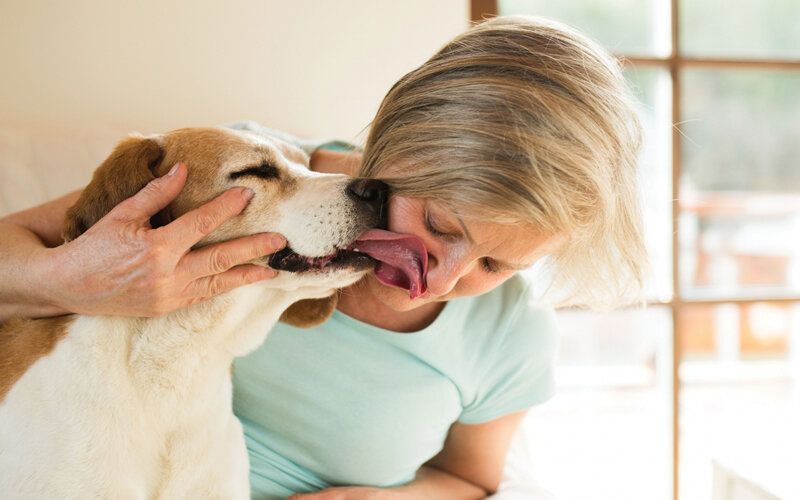Why do dogs lick when they're scolded?
Why do dogs lick when they're scolded?
Did you know that a dog tries to say something important when he licks it in your face? Recent research from scientists in the UK, Brazil, and Germany has shown that when a dog licks, he is trying to communicate with us. According to Phys.org, this is how a dog reacts to certain facial expressions.

But what kind of facial expression causes this reaction? There was a surprise waiting for the researchers: it turned out that licking a dog is most often associated with an external manifestation of anger. In other words, dogs almost always lick their faces when they think they're angry.
Scientists at the University of São Paolo in Brazil have observed dogs reacting to emotionally significant images and sounds. Examined dogs were shown pictures of different grimaces of people and dogs, and were given audio recordings of the audible expressions of different emotions.
It was observed that the vast majority of dogs started licking as soon as they saw a person's angry face. The ability of animals to see and understand negative human emotions was the most important discovery made in this study.
"It is noteworthy that the lick reaction was caused solely by the appearance of an angry person, or rather the expression of his face. However, it should be noted that dogs, in general, were much more likely to be licked looking at people rather than other dogs", says Natalia Albuquerque, Lead Manager of the research team.
In other words, licking a muzzle is probably a special form of communication and is a response message to the person whose face expresses anger. And it is the face because the dogs did not give such a response to the angry voice of the person addressed to her. It is no coincidence that dog behavior specialist Turid Rugaas, in his works, calls licking the face, along with looking away, "a gesture of peace".
This means that dogs actively interact with humans, forming a visually noticeable response to visual stimuli and responding with a special facial expression to human mimicry. Scientists have assumed that such a model of behavior can be congenital, however, its development and fixation were promoted by the domestication process.

Co-author of the study, Daniel Mills of Lincoln University in the UK explains: "Because of the dominant role of vision in the rest of the senses, people are known to be extremely visually oriented. The individual thinks of visual images on his own, and forms visually significant models of interaction in interpersonal relationships".
Since a dog's vision is slightly worse than that of a human, many people tend to think that a dog attaches much more importance to other senses when it interacts with the world around him. But it has turned out that a dog also relies on visual signals when communicating with humans.
The results of these studies are complemented by the work of Dr. Angelika Firnkes of the University of Munich in Germany, who discovered that a domestic dog addresses a human being with "gestures of peace" not only when threatened by him, but also during the welcome.
Based on an analysis of the frequency of muzzle licks in potential conflict situations, such as a "threatening scream" or "threat of physical harm", the author of the study concludes that such behavior is used by dogs to signal peace and the desire to avoid conflict, not just to "reassure" an opponent.
It turns out that licking a dog's face is an important element of healthy dog-to-person communication. As studies have shown, the dog sees and understands our negative emotions very well. When licked, he does not ask the person to back down, but waits for a signal that he too is ready to stop possible aggression.
The best human response to such dog actions can be to demonstrate a willingness to reduce the potential threat level. This can be done, for example, by looking away and squatting in front of the dog so as not to create a negative background by overhanging it.
The results are very remarkable. They add a few more lines to a long and constantly growing list of evidence of a dog's very strong mood for human emotion. Dogs strive to communicate and understand people and often seem to make much more serious efforts than humans.



